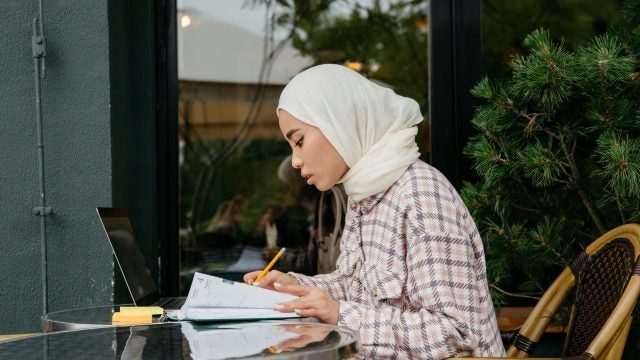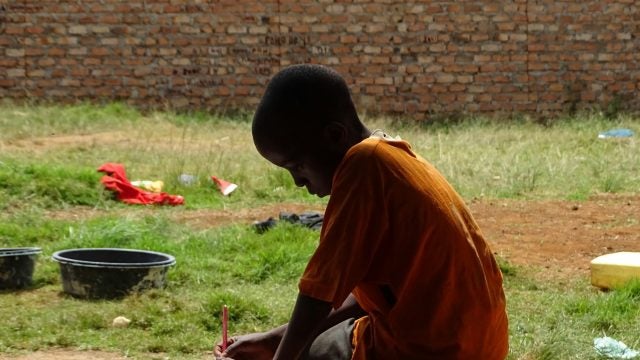Title: The Bougainville Referendum: From Holy War to Renewal?
Between November 23 and December 7, 2019, the Autonomous Region of Bougainville (ARoB), a small group of islands in the Southern Pacific, overwhelmingly voted for full independence from Papua New Guinea. The referendum is part of the Bougainville Peace Agreement, which was achieved after a long and arduous process to end a decade of conflict and civil unrest between 1988 and 1998. The main goals of the 2001 peace agreement were disarmament, the establishment of an Autonomous Bougainville Government, which occurred in 2005, and a referendum on the region’s future political status. During last year’s referendum, some 180,000 voters—more than 85 percent of the registered population — responded to the question: “Do you agree for Bougainville to have Greater Autonomy or Independence?” Independence saw support from 98.31 percent of voters.
For Bougainvilleans, the future of Bougainville depends on the outcome of this referendum and its ratification by Papua New Guinea (PNG). Envisioned as a break with the recent past, which has been characterized by an almost decade-long war, followed by an equally lengthy period of fragile peace building and failed re-development, hopes are that the referendum will deliver what many have aspired to since 1964: sovereignty. This historical push for independence translated into demands for autonomy within PNG, leading to the 1973-74 agreement to establish a provincial government for Bougainville. However, arguments between the PNG government and Bougainville leaders saw the latter unilaterally declare independence from PNG on September 1, 1975. This occurred just weeks before PNG became independent and annexed Bougainville as one of its provinces on September 16, 1975. The violent conflict that erupted later only sustained Bougainville’s ethnic identification and desire for sovereignty and independence.
In 1988, local landowners forced the closure of one of the largest copper mines in the world, the Panguna mine in central Bougainville. This mine was owned by mining multinational Rio Tinto and operated by its subsidiary Bougainville Copper Limited (BCL), who refused to meet the demands of local landowners for compensation for environmental damage and inequity. Upon the forced closure of the mine, the government of PNG, a major beneficiary of the mine’s revenues, deployed the PNG Defense Force with support of Australian military equipment and engaged in a guerrilla war with the Bougainville Revolutionary Army (BRA). Initially led by Francis Ona, the BRA engaged in what many perceived as a holy war to protect Bougainville’s land and rights. In addition to economic and political aspirations, Ona’s liberation theology included strong notions of nationalism, kastom (tradition), and Charismatic Catholicism. With help from God and Mary, Ona aimed to re-establish Me’ekamui—the Holy Land of Bougainville.
The largest conflict in the region since the World War II, the Bougainville conflict brought immense loss and suffering. The death toll reached between 15,000 and 20,000, with many people dying from preventable health issues caused by an economic blockade enforced by PNG. During the conflict, Francis Ona took refuge in the mountains near the Panguna mine; refusing to partake in peace negotiations, and blocking access to the mine until his death in 2005. Despite the risk of re-opening old wounds, discussions about re-opening the mine have increasingly dominated the debate around the referendum. As journalist Ben Bohane wrote: “To view the Panguna pit is to witness an industrial apocalypse and one of the largest man-made holes in the world; a vast open-cut copper and gold mine in the highlands of Bougainville island, slowly being reclaimed by jungle. […] Here lie buried the broken corporate dreams of a colonial age but also the promise of a future with local landowners in control.”
However, this promise of a future where local landowners and Bougainvilleans are in control is undermined by threats to Bougainville’s unity and peace. Although Bougainville has been in the process of post-conflict peace building since the end of the conflict, the political issues and the roles played by influential leaders during and shortly after the crisis are still very prominent today. These issues challenge the legitimacy and recognition of official Bougainvillean bodies. During the lead up towards the recent referendum, these tensions became prominent, with ex-combatants, landowners, and political leaders disagreeing on many issues, including the re-opening of the Panguna mine. As during the conflict, they sought to empower themselves by mobilizing divine intervention through pilgrimages and prayer sessions. For example, local leaders have supported pilgrimages to the birthplace of the PNG martyr the Blessed Peter To Rot in Rabaul in East New Britain in order to destabilize the Autonomous Bougainville Government (ABG), and President Momis in particular.
At the same time, Bougainvilleans of all denominations and political affiliations have been focused on the referendum and its anticipated outcome, directing many of their religious and spiritual activities in this direction. For example, Catholics in the Autonomous Region of Bougainville and in the diaspora in Australia have been praying the Novena and the Rosary for the Referendum, timing their novenas to conclude with the beginning of the referendum. In 2016, the International Pilgrim Virgin Statue of Our Lady of Fatima returned to the region, symbolizing hope for political and economic renewal. Coined as “Bougainville rises from the ashes,” Fatima’s visit to the Autonomous Region of Bougainville saw both Catholics and non-Catholics joining and reaching out to Fatima, bringing churches, communities, and people from different denominations and language groups together towards healing and peace. Moreover, drawing on Francis Ona’s vision of the unification of religious leaders as a guide for independence, leaders from the main four Churches in Bougainville (the Catholic Church, Seventh Day Adventist, Pentecostal Churches, and United Church) recently united in the Bougainville Christian Churches Association (BCCA), urging for moral and spiritual clarity to facilitate independence.
In short, ethno-nationalist and religious sentiments brought Bougainvilleans together to create the necessary conditions for the referendum to take place. Significantly, women have been taking the lead in organizing rallies for unification and reconciliation, just as they did during the conflict. In fact, many women built upon their identity as “mothers of the land” and as peace builders, two roles which were established during the conflict, to again exercise agency and positively influence the referendum process and outcome.
While some have expressed concern about the referendum triggering renewed violence, the process itself has been peaceful and celebratory. However, whether this spirit of celebration and hope can be maintained in the twelve months following the referendum remains to be seen. There are concerns that citizens might become frustrated if there are perceived delays in determining Bougainville’s future political status. In the following months, the legitimacy of the referendum will be tried and the durability of its outcome tested. A major complication is that the referendum’s outcome is not binding, but needs to be ratified by the PNG government, which wants to prevent further fragmentation and is not eager to see one of its most mineral-rich provinces secede. Moreover, Bougainville is in the process of electing a new government, and this transition to a new generation of leaders will also impact the future of Bougainville. As such, the renewal promised by the referendum has not been fulfilled yet. Considering the drawn-out and difficult process of ratification, one can only hope that the referendum will be able to bring the independence, peace, and prosperity the people so desperately desire.
. . .
Anna-Karina Hermkens is a lecturer and researcher working at the Department of Anthropology at Macquarie University, Sydney. Her work focuses on the interplay between gender, religion, and conflict in the Asia-Pacific.
Recommended Articles

Amid stalled U.S. federal climate engagement and intensifying transatlantic climate risks, subnational diplomacy has emerged as a resilient avenue for cooperation. This article proposes a Transatlantic Subnational Resilience Framework (TSRF)…

The 1997 hijab ban in Türkiye left lasting effects on Muslim women’s psychological, social, and religious identities, shaping their experiences across academia, bureaucracy, and politics. Evidence from interviews…

This article advances the idea that teaching children their mother tongues and learning adjacent national languages offers better prospects for consolidating nation-building and contributing to cultural preservation. Kenya’s case illustrates…